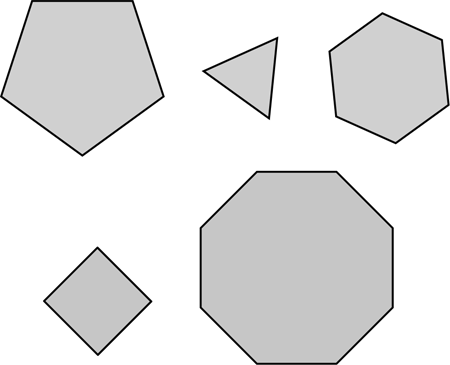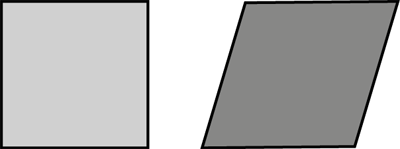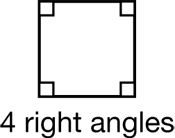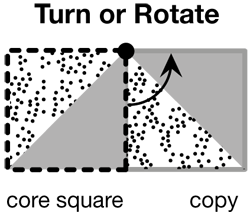R
reasonable
Possible; could be.
pages 133, 139, 144–145, 164, 185, 187, 243, 328–329, 371–372
reasoning strategy
Using known facts and logic to work through a problem.
pages 47–48
rectangle
A quadrilateral with four right angles.

pages 99, 201–203, 205, 240, 257, 275, 294, 364–365, 366, 370–372
rectangular prism
A prism whose bases are rectangles.

page 317
rectangular pyramid
A pyramid whose base is a rectangle.

regular shape
A shape is regular if all sides are of equal length and all angles are equal.

pages 294–295
remainder
The amount left over after division. For example, 16 cannot be divided by 5 evenly; 16 ÷ 5 = 3 with 1 as a remainder.
(See also leftover.)
pages 63, 374
repeated addition
Adding a number to itself two or more times.

responding variable
The variable whose value results from the experiment. Experimenters find the value of the responding variable by doing the experiment. The responding variable is often called the dependent variable.
rhombus
A quadrilateral with four sides of equal length.

page 313
right angle (square angle)
An angle that measures 90°.

pages 307, 309, 311, 321–322
Roman Numerals
A system of representing numbers used by the Romans. The symbol I represents 1, V represents five, and X represents ten, etc.
page 132
rotation
A motion in which a figure is turned around a point.
(See also turn.)

page 132
rounding
Replacing a number with the nearest convenient or friendly number. Numbers are often rounded to the nearest whole number, ten, or hundred.
page 133
rounding down
Rounding to the closest ten or hundred benchmark that is smaller than the given number.
page 133
rounding up
Rounding to the closest ten or hundred benchmark that is larger than the given number.
page 133
row
In an array, the objects lined up horizontally or going across.

pages 34, 38, 39, 66–67, 78, 201–203, 205, 263










